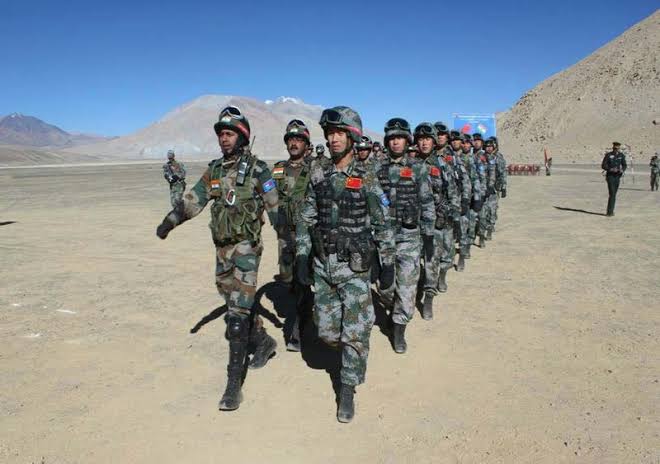Why China has made new units in Aksai Chin?

It is inevitable that Aksai Chin, which is uninhabited, will eventually be subjected to a colonising mission.
With China’s large investments in infra and mining, Han migrants could enter the area claimed by India
China has just announced the creation of two new counties in Xinjiang: He’an and Hekang. These counties will cover the entire Aksai Chin plateau, including the 38,000 square km area claimed by India.
Hongliu (Dahongliutan) is being announced as the capital of He’an and Xeyidula (Shahidullah) of Hekang.On December 27, 2024, Xinhua reported that the decision to create two new counties out of Hotan (Khotan) and Pishan counties had been approved by the Central Committee of the Communist Party of China and the State Council.
The move comes after the Indian and Chinese troops completed the disengagement process along the LAC on October 28, 2024.
The reason for Khotan’s division is not clear. Gaustana or Godaniya, which translates to ‘land of the cows’ in Sanskrit, is Hotan’s original name. It was called Ling-yul by the Ladakhis and Yu-ten by the Chinese.
Before the Chinese arrived here in the ninth and tenth centuries, Khotan was an important point on the Silk Road, with a flourishing Indian culture. It was the centre of the ancient Buddhist Saka Kingdom.
Khotan was ruled by Mirza Abu Bakr Dughlat before Gazi Sultan Syed Khan established the Yarkand Khanate in 1510.
Khotan became a county in 1913 after the collapse of the Qing Empire. In 1919, the Karakax/Moyu county was separated from Khotan.
In 1933, Muhammad Amin Bughra, a local Amir, declared Khotan an Emirate. The People’s Liberation Army entered Hotan on December 22, 1949.
In 2013, a Muslim uprising in Hanerik resulted in the death of hundreds of people. The greater part of Aksai Chin, which includes the picturesque Aksai Chin Lake or Amtogor Tso, will be included in the new He’an county, with Hongliu as its capital.
Southeast of the Lingzi-Thang plains is Surigh Yilganing Kol, also called Salikyaili Genzhi Tso, from where Indian nomads collected salt until the 1950s to trade with other areas.
India’s claims line encompasses the strategically crucial Tianshuihai, which is also called by Ladakhis as the Thalda Basin or Mapothang.
Tianshuihai is situated east of the Lakh-Zang range and northwest of the Aksai Chin Lake, which separates the Aksai Chin plateau from the Lingzi-Thang plains in the south and the Kunlun plains in the north.
The 1962 clash between India and China took place in these locations. Tianshuihai and Tianwendian are major military sites in the PLA area, which is traversed by China’s G315 and G219 highways.
The LAC is situated near Hongliu town, which is also called Dahongliutan. The place was earlier a barren stop for trucks travelling on the G219 highway.
The area has become a hot spot for rare metal mining due to the abundant resources of lithium, rubidium, beryllium, tantalum and niobium.
The Chinese have been developing infrastructure to make use of the abundant pegmatite resource in Dahongliutan, which is believed to have more than 2 million tonnes of lithium.
It’s possible that Hongliu’s new administrative town is being constructed to promote mining. There are almost no villages in the region.
It is inevitable that Aksai Chin, which is uninhabited, will eventually be subjected to a colonising mission. With large-scale investments by China in infrastructure and mining, Han migrants could enter the area claimed by India.
China is possibly aiming to turn this deserted and prone-to-war frontier area into an economic outpost by connecting it to the global network as part of the Belt and Road Initiative.
It appears that the Hekang county, with Xeyidula (Shahidullah) as its capital, is being created from the current Pishan/Guma county. From here, the Karakash (Black Jade) river flows north into Khotan and becomes closer to Karakoram.
Shahidulla in the Karakash Valley was a vital point of entry and location for the British, Russian, Chinese and Kashmiri empires during the Great Game.
The Hindu Tash region in the Kunlun range was the extent of India’s dominance at that time. Sumgal (meaning “three fords” in Ladakhi), which used to be the main route between Karakash and Khotan, is located between the Hindu-Tash mountain and the Aksai Chin plains.
In 1864, Maharaja Ranbir Singh of Jammu and Kashmir ordered the construction of a fort on a bluff near Shahidulla, where a small Dogra force guarded the fort until 1866, when its remote location led to its abandonment.
In 1865, William Johnson established a forward line and marked India’s border at Brinjga in the Kunlun, across Karanghu Tagh of Ladakh.
The Khotanese area included the Chinese Yangi Langar. The northernmost boundary line of India was marked by a broad swath of the Kunlun, which includes the Kilian and Sanju.
Following a 100-mile stretch east of the Kunlun, the Ladakh-Khotan frontiers then detoured beyond the Kunlun before heading southeast to incorporate Aksai Chin and connect with the Lingzi-Thang plains of Ladakh.
Johnson may have been motivated to draw the alignment for several reasons:
a) Uyghur, Indian and Tibetan caravans passed through Shahidulla, a vital tract junction between the Kunlun and Karakoram ranges;
b) Karakash has a strong Indian Buddhist influence that dates back thousands of years;
c) the Uyghur tribes have long recognised the Hindu-Tagh or Hindu-Tash pass as the traditional border with India;
d) farmers from Nubra and Changthang could have easily brought the entire Karakash valley under cultivation due to its abundance of water;
e) population would have been another factor, though the area was susceptible to Kanjuti robber attacks; and
f) Yaqub Beg himself thought the Kunlun delineated the Kashgharia border.
Nevertheless, the British recognised Beg’s dominance over Shahidulla, denied the Maharaja’s claim and blocked Johnson’s plan.
Rather, they considered Ak-Tagh in the Karakoram as India’s natural frontier. Since the British colonists had no intention of keeping the passes north of the Karakoram, the Chinese occupied Shahidulla in 1890.
The Chinese took control of the Maharaja’s fort and erected a new one at Suget Karaul, close to Suget Pass, after the Indian guards were evacuated by 1892.
Since then, China has continued its incursions into Aksai Chin and south of the Karakoram.
Another possibility is that China is responding to India’s decision, announced in August 2024, to create five new administrative districts (Sham, Nubra, Changthang, Zanskar and Drass) out of the districts of Ladakh, Kargil and Leh.
India must also develop a more compelling regional economic story for Eastern Ladakh.
By P Stobdan




